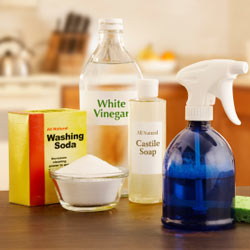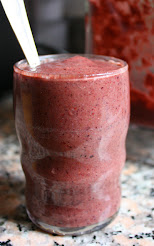Food and Mood
We hear a lot about what we should look for in our foods: the vitamins and minerals, the daily value percentages of fats and carbs, the calories... But we don't often consider the energetics of food. Have you noticed that your body, energy and mood feel very different when you eat red meat and potatoes versus fish and fresh greens? A jelly doughnut versus an apple?
"Virtually no one in the field of health and nutrition speaks about the concept of food having energy, but if you stop and think about it, it intuitively makes sense. Vegetables have a lighter energy than proteins. Animal meat from tortured animals has a different energy than meat from animals that lived a peaceful existence." (Joshua Rosenthal,
Integrative Nutrition: Feed Your Hunger for Health and Happiness) Think about your tense shoulders and sore neck after a hectic work week. Our body quite literally becomes a warehouse to store our stresses, our fears, our pain - why would it be different for other living organisms?
Understanding what to eat for your own body, whether you are interested in losing weight, increasing your energy, or beating sugar cravings, all starts with awareness of how different foods make you feel. If we don't have this personal awareness, it can be impossible to get the results we want.
For example, if I listened to my cravings for bread (heavy, dense, baked, processed) every time I was feeling low-energy, I'd probably always be low-energy. Although it might give me an initial boost, wheat takes a lot of energy for my body to digest and usually leaves me feeling sluggish and slow. On the contrary, when I feed my energy-craving body with a fresh salad with seeds and fruit (green, oxygen-rich, sweet, hardy), my body, energy and mood feel refreshed, alive and clear for hours.
Steve Gange, author of
Energetics of Food: Encounters with Your Most Intimate Relationships, writes about how all foods have distinct qualities and
energetic properties, depending on where, when and how they grow, as well
as how they are prepared. Consider where, when and in what direction your plant food grows:
 Greens
Greens (such as kale, collards, spinach, romaine, bok choy) reach up toward the sun to make chlorophyll. Eating foods rich in chlorophyll provides our blood with oxygen, which is a powerful way to enhance our mental clarity, to boost our mood and to lift the spirit.
Sprouts are literally bursting with growth and spring-time activity, rushing with sweet sugars, nutrients and activity, to create new life. Eating sprouts can make us feel clean, light, alive, alert and ready to go.
Squash and gourds (zucchini, pumpkin, butternut squash, acorn squash) grow in the autumn, as we begin to take stock and settle down for the winter. They grow level with the ground and have natural comforting sugars, helping us balance our moods and energy levels.
 Root vegetables
Root vegetables (like potatoes, yams, beets, parsnips, carrots) grow down into the ground and absorb their nutrients from the soil, therefore having a strong "rooting" or grounding energy, helpful for when we feel stressed, overwhelmed or frazzled.
Any insights? What here makes sense to you? Have you felt the effects of different types of foods before?
This week, start to notice how the foods you eat make you feel. Observe your own energy and moods and experiment with changing the energy of your food to help you feel how you want to. Share what you find! What foods make you shine?










